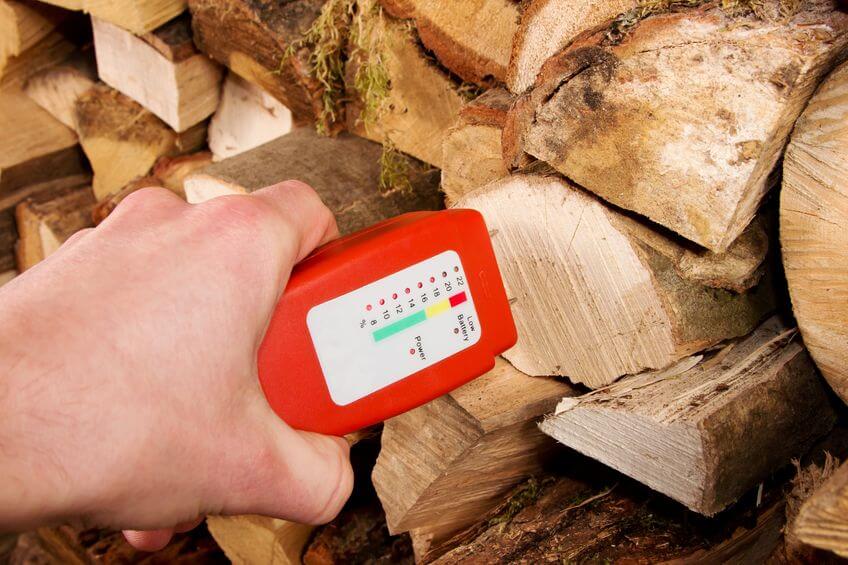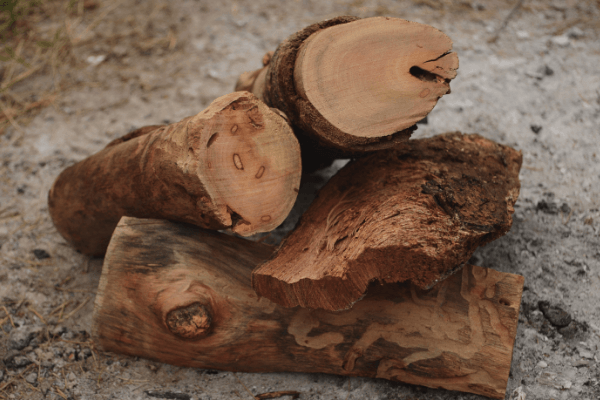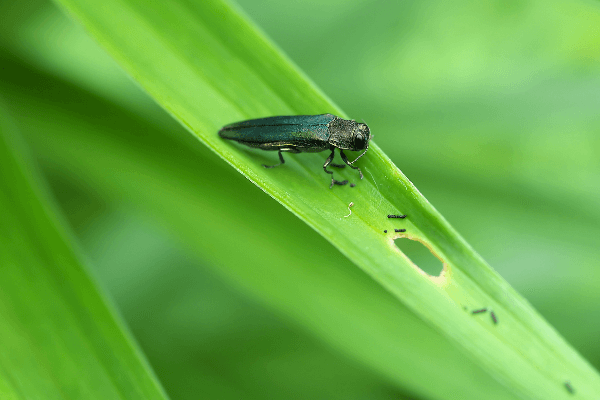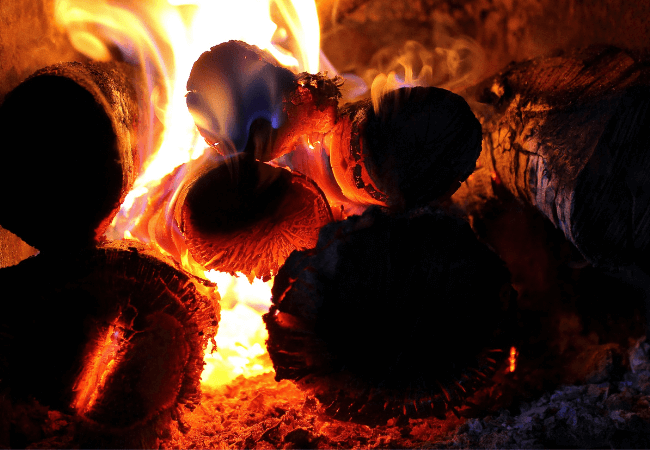- Home
- Firewood Types
- Ash Firewood
Ash Firewood
This post may contain affiliate links so I earn a commission.
Is ash firewood a good choice to burn this winter?
The answer is yes, in fact some may argue that ash is the best firewood to use!
The ash tree is a common tree found throughout most of the United States and Canada.
16 different species of ash have been identified, but the white ash and green ash are the most common species sought after for firewood.
Although ash may produce slightly lower BTUs than oak or sugar maple, it's a popular firewood choice for many people.
Ash firewood is known for splitting very easy and having a low moisture content.
A freshly cut piece of ash has a moisture content slightly higher than seasoned ash.
This can be a great advantage if you're running low on firewood and need to fell a tree in the middle of winter.
 Moisture Meter Checking Firewood Moisture Content
Moisture Meter Checking Firewood Moisture ContentHaving a low initial moisture content allows the tree to be safely used immediately after harvesting, although allowing the wood to season before use is always best.
I've burned both green ash (not seasoned) and dry ash (seasoned) and there's a noticeable difference between the two.
It will burn green but seasoned is much more user friendly.
In a perfect world you should let firewood season at least one year. Seasoning ash for one year is sufficient if you stack it off the ground, cover the top 1/3 portion of the firewood stack and allow the sun and wind to cure the wood.
Some species of trees, like red oak, take at least two years to season....typically three.
This is a great example of why ash is so popular compared to oak, plus ash splits a lot easier!
White Ash Firewood
The white ash, also known at the American Biltmore or cane ash, is considered to be the best among the ash species.
This rapidly growing tree is popular for making baseball bats and tool handles do to its strength and flexibility.
Woodworkers like the white ash because it can be bent into various shapes without jeopardizing its strength.

The white ash will commonly grow between 70-80 feet tall and likes rich, moist, well drained soils.
If grown in open areas, the tree will produce a nice large canopy making it a popular shade tree.
Green Ash Firewood
The green ash is one of the most common and abundant species of ash.
The tree grows approximately 70 feet tall and can live for up to 100 years, however, 30-50 years is more common.
Often mistaken for the white ash, the green ash has many of the same characteristics.
The tree is used more for ornamental purposes and is not as popular for commercial purposes as the white ash.
Diseases Affecting The Ash Tree
The ash is a hardy tree resistant to many diseases.
One major invasive insect that threatens the ash tree is the Emerald Ash Borer.
The Emerald Ash Borer is a destructive exotic pest from Asia responsible for killing millions of ash trees.
First discovered in southeastern Michigan in 2002, this invasive species has spread to 14 states and parts of Canada.

The Emerald Ash Borer is a small, 1/2 inch long insect that has a bright metallic green color.
The larva is what causes all the damage to the ash tree.
The larva tunnels under the bark and disrupts how the tree transports food and water, starving the tree and eventually killing it.
Although the Emerald Ash Borer can fly, the insect is commonly spread by moving firewood.
Transporting firewood from your home to another location can increase the spread of this destructive invasive species.
Remember not to move firewood and always buy or cut your firewood locally to help prevent the spread of the Emerald Ash Borer.
Firewood Usage
Overall, ash firewood is an excellent tree for heating your home with wood.
The wood supplies good heat and splits extremely well.
Ash is very user friendly and depending on who you ask, is often a top choice for anyone who burns firewood.
I love to split ash firewood because you can usually split a round in one strike without too much effort.
For beginners, it's a great wood when learning how to swing a splitting axe or maul.

One thing to consider when cutting up an ash tree is whether or not the tree is dead standing or still alive.
Since the Emerald Ash Borer has killed nearly every ash tree around, a vast majority of standing ash trees will be dead.
A visual inspection of flaking bark, no leaves and dead limbs is a good indication.
While this is great for firewood, it makes felling some ash trees very dangerous because the middle of the ash tree can be rotten causing the tree to split while felling (known as a barber chair) and the dead limbs can break off creating a "widow maker."
If you're felling an ash tree just be aware of the factors above to keep you safe.
White ash will produce 23.6 million BTU's per cord.
Green ash will produce 20.0 million BTU's per cord.

About the Author
Obsessed with firewood, Nick is behind over 350+ of Firewood For Life's articles, as well as countless reviews, guides and YouTube videos to help readers like you reduce heating costs and create the perfect fire.


